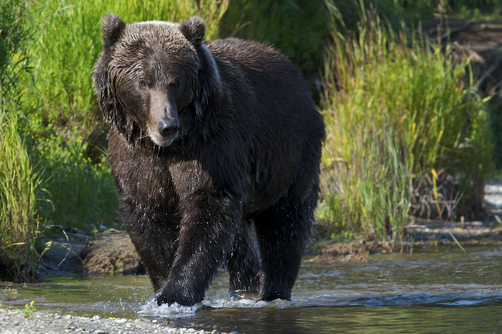Be wary around those brown bears!
- Brown bears are large mammals native to northern Europe, Asia and North America, and along with polar bears, are the largest bears and land predators.
- Brown bears have the scientific name Ursus arctos, meaning ‘bear’ in Latin and Greek respectively, and they are from the family Ursidae, the family of bears.
- Brown bears have a formal subspecies count of 16, although there is debate about this number and others suggest between 5 and 90 exist.
- Brown bears typically have a fur colour of a variety of brown shades, depending on the subspecies, with the fur in winter growing up to 11 to 12 centimetres (4 to 5 inches) long.
- Brown bears are generally 1.5 to 2.5 metres (5 to 8 feet) in height and can weigh 55 to 680 kilograms (121 to 1500 pounds) depending on the subspecies and the environment in which they live, and they can weigh twice as much as they would normally before winter when they store fat on their bodies, so that they can semi-hibernate in dens during the cold season.
Brown Bear
Image courtesy of National Geographic
- Some subspecies of brown bears are extinct or endangered, but the species is classified as a ‘least concern’, and they have a population of approximately 200,000 bears in the wild.
- Brown bears are mostly nocturnal, and are typically found in forests with open land areas, as well as mountainous environments.
- Brown bears do not often attack humans, but leading causes include surprise or curiosity, and they can run at speeds of 48 kilometres per hour (30 miles per hour).
- Female brown bears give birth in their den in winter, and litters range from one to four cubs.
- Brown bears can live up to 37 years in the wild, although longer in captivity, and their diet mainly consists of vegetation such as berries, roots and grass, small mammals and salmon, but sometimes larger animals are preyed upon.
Bibliography:
Brown Bear, 2014, National Geographic, http://animals.nationalgeographic.com.au/animals/mammals/brown-bear/
Brown Bear, 2014, Wikipedia, http://en.wikipedia.org/wiki/Brown_bear







